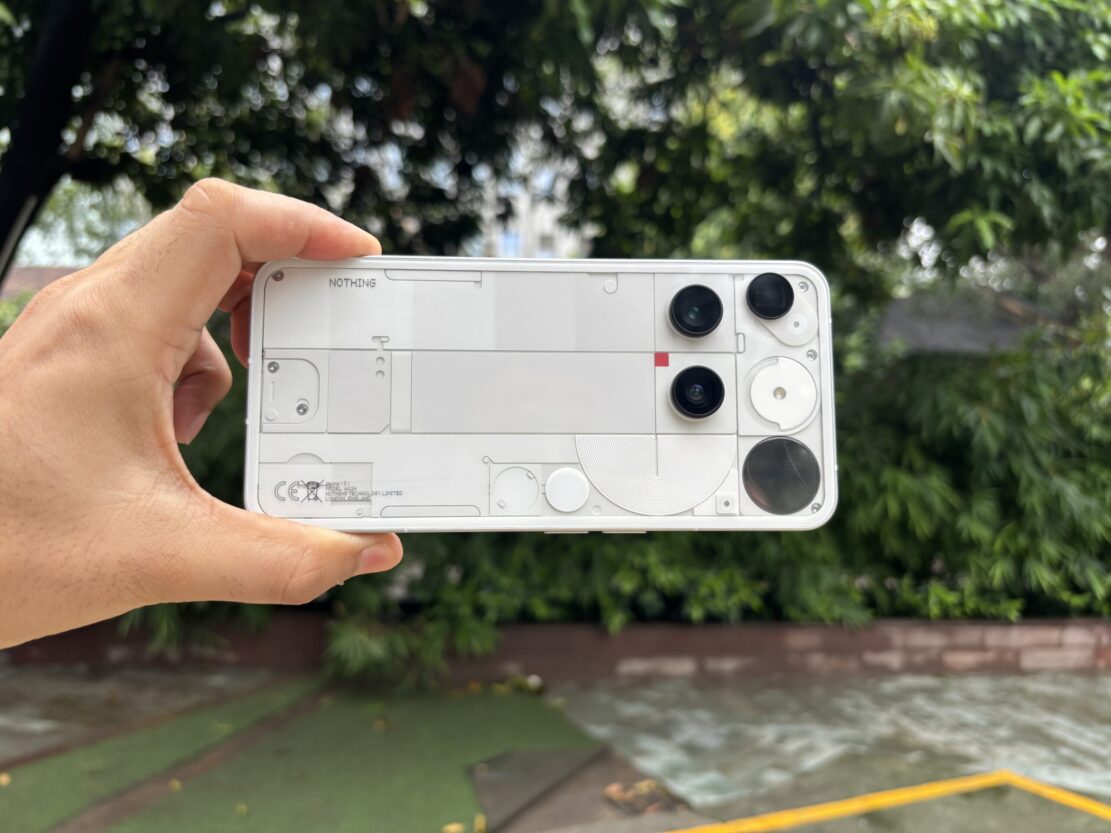
Nothing Phone 3 Review
In a market where every phone starts to feel the same, Nothing has been trying to change that. The company’s third phone — Nothing Phone 3 — lands with a hefty ₹79,999 price tag and the ambition to play in flagship territory. It has a design that turns heads, cameras that do more than click, and software that brings some refreshing ideas to the table. But there’s one catch—the processor.
At this price point, buyers expect top-tier performance. Instead, the Nothing Phone 3 uses a chip found in phones that cost half as much. That’s a risky choice, especially when it’s up against strong competition from Samsung, Pixel, OnePlus, and Apple. So, is the Nothing Phone 3 a bold step forward or just stylish ambition with compromises? Let’s find out.
A Design That’s Still Different
Nothing hasn’t fully abandoned its experimental flair. Instead, it’s shifted towards refinement. The Phone 3 looks like a grown-up version of the brand’s earlier quirky designs. This time, the back houses a Glyph Matrix—a circular set of micro-LEDs that glow for alerts, timers, and charging status.
It’s fun to look at, but not exactly useful beyond the novelty. The layout, with the Glyph on one side and cameras on the other, can feel oddly unbalanced. That said, the materials and build quality are impressive. You get Gorilla Glass Victus on the back, Gorilla Glass 7i on the front, and a sleek aluminum frame.
It finally brings IP68 water and dust resistance—something users had been asking for. The curved edges make it comfortable to hold, and the overall feel is definitely premium.
Display: Bright, Bold, and Easy on the Eyes
The 6.67-inch flexible AMOLED panel steals the show. It offers sharp visuals at a resolution of 1260×2800 and a 120Hz refresh rate. Whether you’re scrolling through apps or watching Netflix, everything feels smooth and crisp.
The screen peaks at an impressive 4,500 nits in HDR, making outdoor use easy. Colours are vibrant, blacks are deep, and HDR10+ content looks brilliant. It also supports PWM dimming at 2160 Hz, which means less eye strain during long usage.
In this price segment, the display holds its own—sometimes even outperforming what more expensive phones offer.
Software Experience with AI Touches
The Phone 3 ships with Nothing OS 3.5, based on Android 15. While many brands try to stuff in features, Nothing keeps it clean. The software stands out visually too, with its minimal dot-matrix style icons and animations.
However, one big miss is that the phone doesn’t come with Android 16, which feels a bit behind for a late 2025 launch.
Nothing makes up for it with AI-driven features like Essential Space and Essential Search. A dedicated key on the side gives quick access to notes, recordings, and screenshots. The AI neatly organises everything. It’s fast, works offline, and doesn’t feel bloated like some other Android skins.
Performance Falls Short of the Price
Here’s where the Nothing Phone 3 starts to stumble. At ₹79,999, users expect top-tier speed. But Nothing has gone with Snapdragon 8s Gen 4, a chip you’ll also find in ₹30K phones like the iQOO Neo 10 and Poco F7.
While everyday tasks run smoothly and multitasking is fluid—thanks to 16GB RAM and UFS 4.0 storage—the benchmarks don’t match up with competitors like the Galaxy S25 or iPhone 16.
Games run well at high settings, but the phone does warm up during extended sessions. For creators or power users expecting flagship-level raw power, this might be a letdown.
Cameras That Offer More Than Expected
The quad 50 MP setup is where Nothing regains some lost ground. The phone includes a main sensor, a periscope zoom lens, an ultra-wide, and a high-quality selfie camera.
Photos look clean and vibrant in daylight, and night mode captures good detail without excessive noise. The periscope zoom is a pleasant surprise. It offers 6x lossless and up to 60x AI zoom with solid results.
The portrait mode delivers nice edge separation, and even the macro shots shine. Video recording supports 4K 60fps across all lenses—including the front one—with excellent stabilisation.
In short, the Phone 3 feels built for creativity. If you’re someone who shares a lot of visual content online, this camera package stands out.
Battery Life
With a 5,500 mAh battery, the Nothing Phone 3 easily lasts a full day and more. The battery uses silicon-carbon chemistry, making it more efficient than standard lithium-ion setups.
You also get 65W wired charging, 15W wireless charging, and reverse charging. A quick 10-minute top-up gives you nearly 30% charge. But there’s a catch—the charger isn’t included in the box.
Charging progress is shown through the Glyph Matrix, which actually feels like a useful gimmick for once.
Final Verdict: Who Should Buy It?
The Nothing Phone 3 brings a mix of art and tech. It looks bold, runs smooth, and shoots great photos. The Glyph Matrix, the software experience, and those little AI touches make it unique.
But the processor choice doesn’t match its price tag. And launching with Android 15 feels out of place when Android 16 is already here. At ₹79,999, buyers deserve better performance and future-proofing.
So, should you buy it? If you care about design, creativity, and a phone that doesn’t feel boring, it’s worth considering. But if raw power, longer OS support, or resale value matter more, phones like the Pixel 9, iPhone 16, or Galaxy S25 offer a better deal.
The Nothing Phone 3 isn’t a full-blown flagship. It’s more like a daring artist trying to be an athlete. Fun to watch, unique in style—but not quite built for the race.
